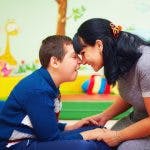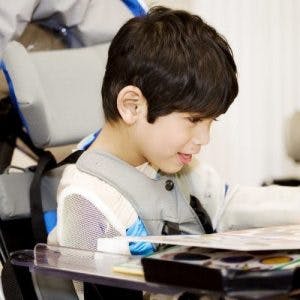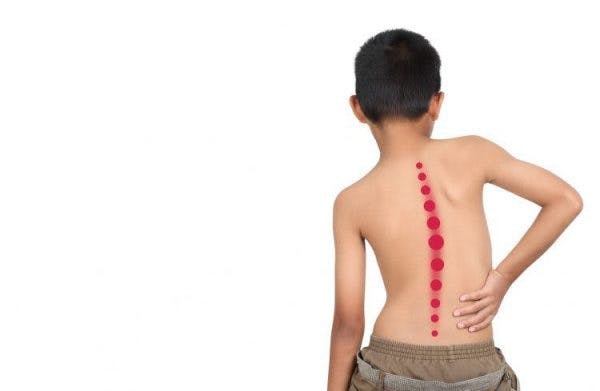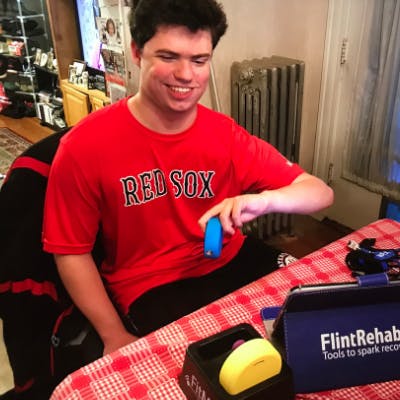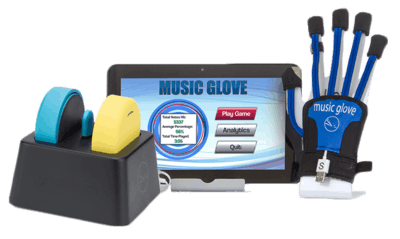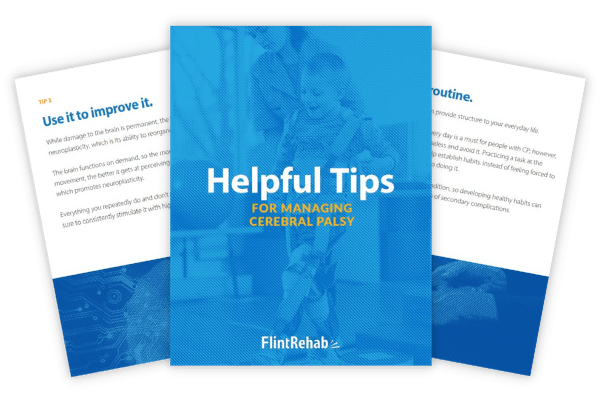Many individuals with cerebral palsy experience feeding difficulties due to motor impairments that affect the muscles necessary to chew and swallow (oromotor dysfunction).
Chewing and swallowing are complex functions that require over 30 different nerves and muscles. Poor oromotor control can cause malnutrition and interfere with growth.
To help you understand feeding difficulties in children with cerebral palsy, this article will explain its:
Causes of Feeding Difficulties in Individuals with Cerebral Palsy
Feeding difficulties occur in about 30–40% of children with cerebral palsy. Generally, the more severe one’s motor impairments are, the greater their likelihood of having feeding difficulties.
Common causes of feeding difficulties in children with cerebral palsy include:
- Dysphagia. Dysphagia refers to swallowing difficulties. Oropharyngeal dysphagia is caused by motor impairments in the mouth or pharynx (i.e. lack of tongue control, delayed swallowing, drooling, hypersensitivity when food enters the mouth, and sucking or chewing difficulties). In contrast, esophageal dysphagia refers to swallowing complications caused by motor impairments in the esophagus. It’s often described as if food is stuck in the esophagus.
- Gastroesophageal reflux disease (GERD). GERD is common among children with cerebral palsy and may cause esophageal dysphagia. It occurs when stomach acids travel up the esophagus and irritates its lining. It may cause the esophagus to narrow, which makes it difficult for food to pass into the stomach.
- General motor impairments. Lack of physical activity caused by motor impairments may result in a smaller appetite.
- Trunk instability. Low muscle tone in the trunk can compromise posture. Trunk instability affects head stability, which disrupts the alignment of the jaw and tongue.
- Medication side effects. Medications for other complications of CP may affect appetite and cause digestive problems like constipation..
- Miscommunication. Children with oromotor dysfunction also experience difficulties speaking. As a result, they may struggle to express hunger and food preferences.
All of these factors may cause limited food intake, which ultimately affects a child’s growth and development. In the following section, we’ll explain risks associated with poor feeding in children with CP.
Risks Associated with Feeding Difficulties
If feeding difficulties are not addressed, children with cerebral palsy will have a greater risk of developing various health complications.
Poorly managed feeding problems may cause:
- Malnutrition: Children with feeding problems often don’t eat enough food and suffer from poor nutrition. This may significantly affect growth, energy levels, and the overall functioning of the body.
- Dehydration: Dehydration may cause constipation, dizziness, fatigue, and low blood pressure
- Respiratory Problems: Children with untreated dysphagia or GERD may experience respiratory problems as food and fluids enter the lungs (aspiration). In severe cases, this may result in pneumonia, block an airway, or cause a person to choke.
- Achalasia: Achalasia describes nerve damage to the esophagus that prevents foods from passing to the stomach.
To prevent these complications from developing, early intervention for feeding difficulties is essential. Next, we’ll discuss symptoms of oral motor impairments.
Signs of Feeding Difficulties in Individuals with Cerebral Palsy

Depending on the severity of your child’s cerebral palsy, their dysphagia may range from mild to severe.
Milder cases of dysphagia may be difficult to notice and are often misinterpreted as picky eating or accidents. However, it’s important to be aware of signs of dysphagia to ensure proper development.
Signs of a cerebral palsy-related feeding problem include:
- Long mealtimes (over 30 minutes)
- Weight loss or no weight gain in the last 3 months
- Congestion during meals (stuffiness)
- Choking/ gagging
- Drooling
- Coughing
- Tiredness
- Heartburn
- Difficulties opening and closing the mouth
- Uncoordinated jaw movements
- Pain when swallowing
Now that you know the symptoms of oral motor impairments, let’s discuss ideas to manage feeding difficulties.
Tips for Feeding a Child with Cerebral Palsy

Generally, mild feeding problems can be effectively managed through simple adjustments.
Here are 5 tips that may improve feeding in children with cerebral palsy:
1) Be Patient
Children with cerebral palsy and feeding difficulties generally require more time to finish their meals. Expect at least half an hour for your child to complete a meal.
Additionally, try to minimize or avoid distractions (television, toys, cell phones, etc.) so your child is able to focus on eating.
2) Make Sure Your Child Is Chewing Enough
If your child isn’t chewing their food long enough, it may be more difficult to swallow, which may cause gagging or choking.
Consider having your child count 30 chews before swallowing their food or adjust this number depending on what they’re eating. Softer or more watery foods require less chewing because they travel down the esophagus easier. In contrast, dry foods may require more chewing.
3) Modify Food and Drink Textures
Certain textures and consistencies may be more difficult for your child to swallow than others. Foods with different textures like soup with noodles, meats, and vegetables may aggravate the senses.
If vomiting occurs, it’s often in response to a specific texture. Try pureeing foods or cutting them into very small pieces before giving them to your child. This changes the texture and makes it easier to keep the food in their system.
Thicker liquids move slower through the mouth, which gives your child enough time to control their swallowing, while thinner liquids may travel to the back of the throat too quickly and cause choking.
4) Position the Chin Downwards
Having your child tuck their chin down when they eat decreases the space between the back of the tongue and pharyngeal wall.
This adds more pressure and helps push food down the pharynx into the esophagus.
5) Prepare Nutrient-Dense and High-Calorie Meals
Children with feeding problems often don’t eat enough because it’s difficult for them to eat. Preparing nutrient-dense meals ensures they’re getting the calories and nutrients necessary to keep their bodies healthy.
Examples of nutritious, high-calorie foods include peanut butter, olive oil, and avocados.
Discover more foods that are ideal for individuals with cerebral palsy »
Treatment of Feeding Difficulties in Children with Cerebral Palsy

Because feeding difficulties range from mild to severe, individuals with cerebral palsy should seek personalized care. By working with an interdisciplinary team of medical and allied health professionals, individuals receive the targeted care they need to become as functional as possible and optimize their quality of life.
In the following section, we’ll discuss 3 common treatments for managing feeding difficulties in individuals with cerebral palsy.
Feeding Tubes (Gastrostomy)
When a child with feeding difficulties is unable to consume enough food, a feeding tube may be recommended. A feeding tube is surgically inserted into the stomach, which bypasses many complications of dysphagia.
About 1 in 15 children with cerebral palsy require the assistance of a feeding tube to ensure sufficient nutrition. While many parents may be opposed to using a feeding tube, it’s essential to prioritize your child’s nutrition because it affects their growth and overall health.
Additionally, your child may not have to solely rely on the feeding tube. Often, they may eat as they normally would and use the feeding tube to supplement their daily nutritional needs.
Endoscopic Dilation
An endoscopic dilation is a procedure that involves manually expanding narrowed areas of the esophagus.
A physician inserts a thin tube (with a camera at the end for guidance) through the mouth and into the esophagus. Then, a device called a dilator is used to expand the walls of the esophagus.
Ultimately, this procedure makes it easier to swallow and prevents food from getting stuck in the esophagus.
Speech Therapy
Working with a speech-language pathologist (SLP) may help your child develop their chewing and swallowing skills.
An SLP assesses your child’s oral motor skills to determine exercises and activities that may be most effective. He/she may also teach your child alternative ways to communicate when they are hungry as well as what foods they want to eat.
Cerebral Palsy and Feeding Problems: Key Points
Overlooking feeding problems may negatively impact your child’s growth and overall health.
If you suspect that your child has a feeding complication, speak with their pediatrician to determine an effective management plan.
Hopefully, this article helped you understand how cerebral palsy can affect feeding and what you can do to ensure your child’s nutritional needs are met.






